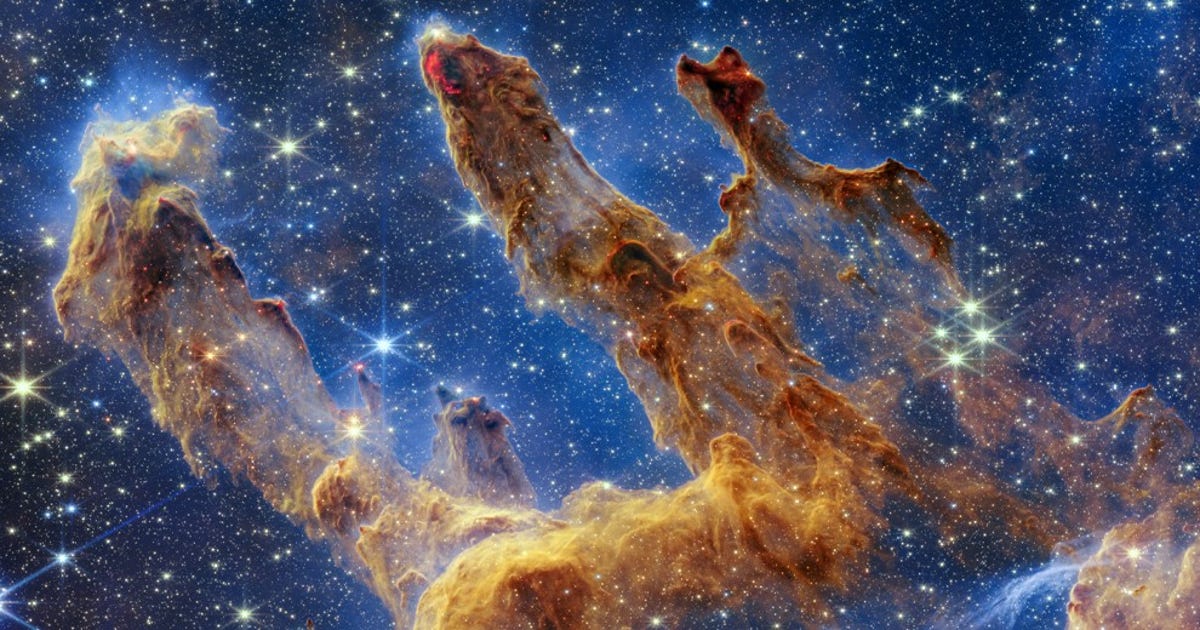
NASA’s most eagle-eyed observatory so far has done it again. The James Webb Space Telescope has returned an image of the iconic “Pillars of Creation” in infrared light that’s the sharpest, most detailed portrait of the spectacular star-forming region ever seen.
The ethereal scene captures translucent columns of cool interstellar gas and dust punctuated by piercing, bright points of light. Most of these are stars, and the reddish balls of fire near the edges of the pillars are newly formed stars, according to NASA.
Don’t confuse these with the deep red, magma-like areas along the inside perimeter of a few of the pillars. This is created by the turmoil of stars that are still forming and shooting supersonic jets of material out into space where they collide with other material. In short, this is what cosmic chaos looks like.
Fortunately these epic explosions and cosmological collisions are far away, at a distance of around 6,500 light-years from Earth.
This region of the universe first achieved fame in 1995 when it was imaged by NASA’s Hubble Space Telescope. A follow-up campaign was done by Hubble in 2014, and plenty of other observatories have also trained their lenses on the area that lies within the Eagle Nebula.

A 2014 image taken by the Hubble Space Telescope on the left, alongside the new image from the Webb telescope.
NASA/ESA/CSA/STScI/Hubble Heritage Project/Joseph DePasquale/Anton M. Koekemoer/Alyssa Pagan
A side-by-side comparison of the new image and Hubble’s take on the cosmic phenomenon reveals how Webb’s infrared instrument is able to peer through the curtains of dust and gas that shroud the scene.
NASA and astronomers around the world will be looking to images like these and more data from Webb to glean a better understanding of the process of star formation.
For the rest of us, it’s some appealing eye candy just in time for Halloween.
